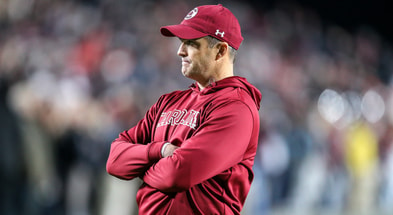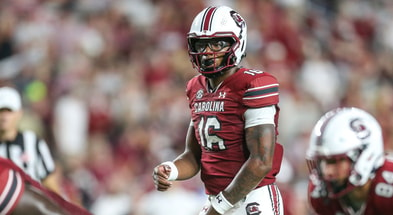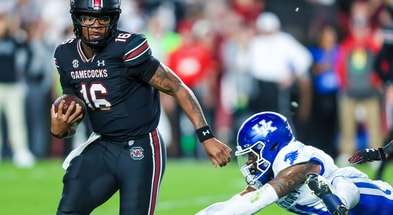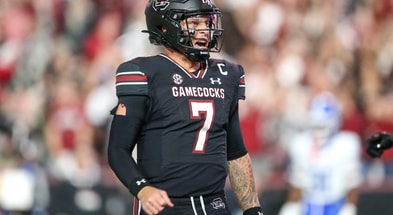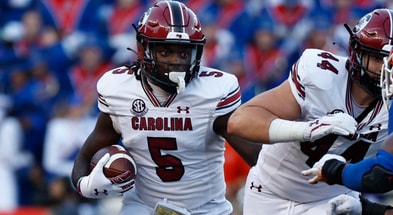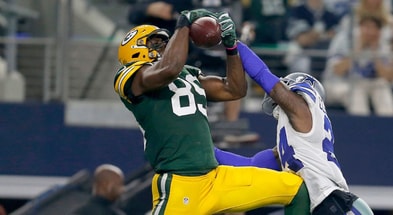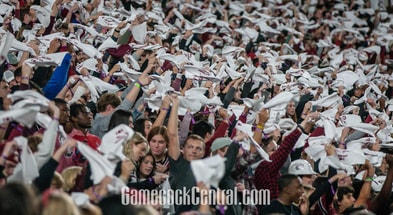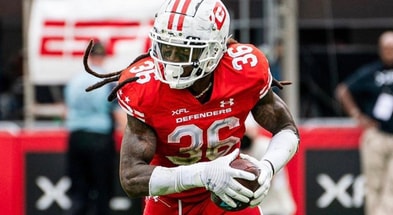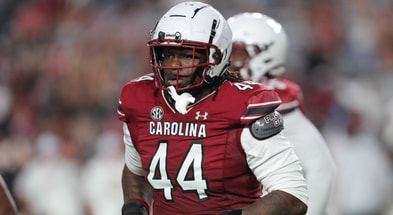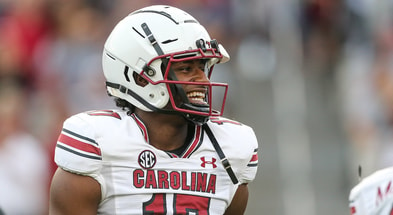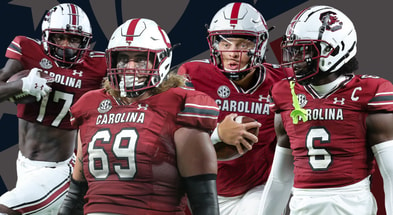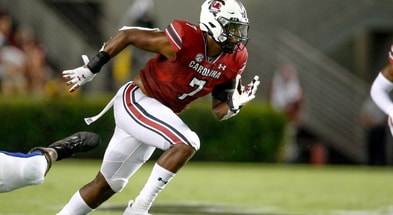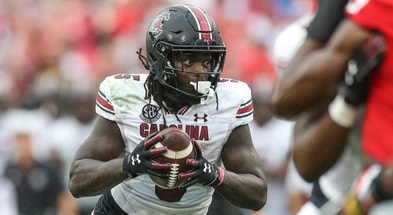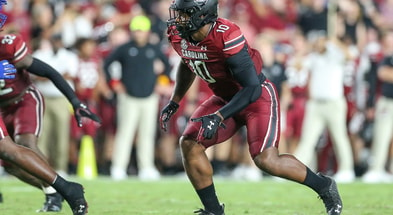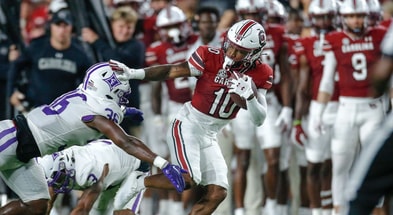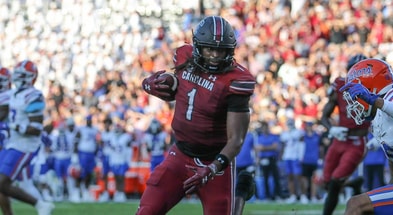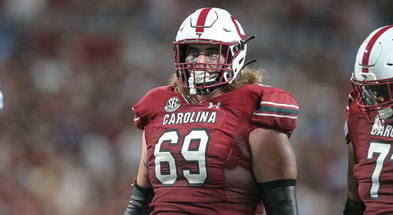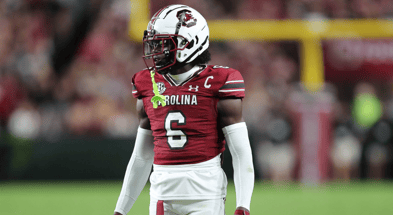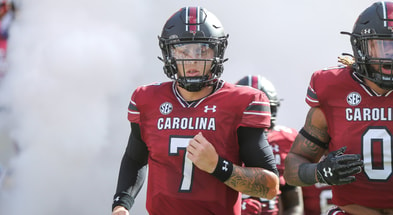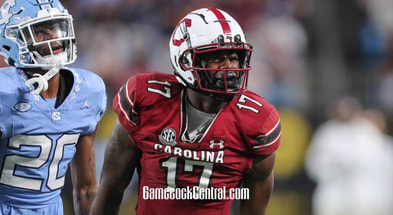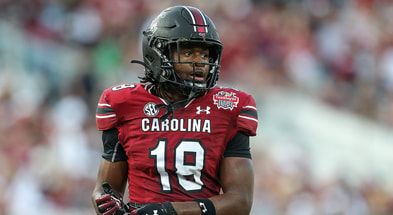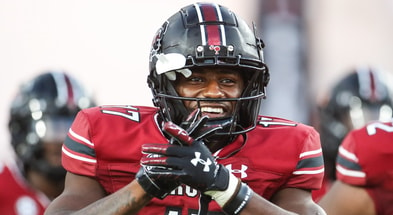All sorts of roughness and brutality: When South Carolina banned football
Introducing South by Southeast – A Gamecock History Newsletter! Alan Piercy, a lifelong Gamecock fan and Carolina grad, brings an ongoing series spanning the history of Gamecock athletics, from the SEC to the Metro/Independent years to the ACC and beyond. A sepia-toned remembrance of all things Garnet & Black. Alan is the author of the upcoming book, A Gamecock Odyssey: University of South Carolina Sports in the Independent Era (1971-1991), due for release by USC Press in November 2023.

“That football feelin’ is in the air – but there is no football team.” – The State, October 1, 1906
From the moment the first American college football game was played on November 6, 1869, between Rutgers and Princeton (a 6-4 Rutgers victory), football engendered the passions of students and fans alike. Over the final decades of the 19th Century, the game spread South where it found fertile ground, and by 1892, arrived at the University of South Carolina.
A ”Wild West” atmosphere pervaded the early, unregulated days of the sport. According to David Dayen of Politico Magazine, lasting injuries were commonplace, and schools frequently admitted local ruffians as “ringers” to beat up on their opposition. Representative Charles Landis of Indiana, brother of the splendidly-named Kennesaw Mountain Landis, future Commissioner of Major League Baseball, said of football, “dog fighting, cock fighting and bull fighting are Sabbath games,” by comparison.
By the turn of the century, football had begun to rival professional baseball in popularity. Despite its undeniable appeal, a crisis of player injuries and deaths sparked intense debate about the game. Christopher Klein, writing for History.com, described America’s gridirons as “killing fields.” Safety equipment and padding were virtually non-existent. Players wore primitive leather caps, a stylistic accessory at best, which provided a bare minimum of protective qualities.
During the 1905 season, nineteen college and high school football players died from injuries sustained during games. With five times the number of players now participating, Dayen notes, that would be the equivalent of ninety-five deaths today. The deaths occurred from a myriad of violent causes, including internal injuries from body blows (four deaths), concussions of the brain (six deaths), spinal injuries (three deaths), and “blood injuries,” likely the result of infections from open fractures (two deaths), among other causes.
The Chicago Tribune described the 1905 season as a “death harvest,” and a Cincinnati Commercial Tribune cartoon depicted the Grim Reaper on a goal post surveying a twisted mound of fallen players.
The problem rose to the level of Presidential action that same year, as Theodore Roosevelt, an admirer of the game, demanded regulatory changes to enhance safety. Roosevelt, who had overcome childhood frailty by determined exercise, thought rough sports were integral in building character in boys, and contributed to the “strenuous life” he called on Americans to embrace, both on and off the field.
“He believed that football was a proving ground for the battlefield,” Klein wrote. Indeed, many of Roosevelt’s Rough Riders, made famous for their exploits in Cuba during the Spanish-American War, had been football standouts.
He sought to save what was good about the sport while heading off a wave of justifiable public concern about the dangers. Adding to Roosevelt’s interest in the matter were paternal concerns, as his son Teddy Junior, was a player on the freshman team at Harvard.
Roosevelt told university officials that football had a violence problem, and if steps were not taken to make the game safer, he would ban the sport by executive order.
In short order, the Intercollegiate Athletic Association, a forerunner to the NCAA, was founded, and implemented rules that revolutionized the game by, among other alterations, dispersing players across the field to enhance safety.
Reform action too late to save the 1906 season for Carolina
Following the lead of several other institutions, including Duke, Columbia, and Harvard, the University of South Carolina’s board of trustees voted to ban football during a meeting on January 14, 1906.
The State reported a board member by the name of Hamer proposed that it would be a good time to take action, as “the team had been successful and no fatalities had occurred.”
The board’s decision caught most by surprise, and the backlash was immediate. The alumni association adopted resolutions in early February, calling the board’s ban on football “hurtful” to the university, and formally requesting the board to reconsider their action.
A February 9, editorial in The State, made slight jest of Harvard’s president, who had been a vocal leader in the efforts to ban football. “Of course, President Elliot is not boycotting football because Harvard has been so lambasted in the game, but it is a bit unfortunate that the protesting yelps should come from the camp of the vanquished.”
By early April of 1906, members of the Intercollegiate Athletic Association’s rules committee met in session at the Murray Hill Hotel in New York City, and passed a resolution designed to meet the growing demand for a “cleaner, more open game.” The committee included the luminaries of the early college game, including Walter Camp of Yale, and Alonzo Stagg of the University of Chicago.
The resolution covered “principally the punishment and definition of all sorts of roughness and brutality,” as well as the power of officials to penalize and control the game.
Perhaps most important among the new regulations was the “Ten-yard rule,” which dictated ten yards must be gained in three downs in order to achieve a first down. The rule doubled the yardage previously in place, which had contributed to violent scrums, with as many as ten linemen attempting to advance the ball by brute force against an equally determined defensive unit.
The old adage of “three yards and a cloud of dust” would no longer result in a first down in three plays. The new rules would indeed necessitate coaches to create new plays to open up the field. Adding to their options was another new rule, which provided for one forward pass per play.
Other rules included a fifteen-yard unnecessary roughness penalty, the fair catch, and a neutral zone between the offensive and defensive lines. Banned were holding, tackling below the knee, and hurtling, the latter of which had often resulted in brutal gashes to the defensive player from the ball carrier’s cleats.
The game was shortened by ten minutes and an additional umpire was added to the staff of officials, with all officials given the power to “report roughness” and to penalize.
Writing of the new rules, The New York Times opined “the death knell of football as played last season” had been sounded, and an entirely new gridiron game created. Indeed, what resulted was the creation of the modern game as we know it today.
The ten-yard rule in particular placed a premium on quality punters, as teams were predicted to struggle in securing the needed first down yardage. Speculation as the 1906 season approached was that “a long and consistent punter promises to be about the most valuable man on the field.” The State reported on September 4 that many institutions held special punting contests for their players, and “many men were instructed to take footballs home with them on their summer vacations, and there to practice punting and drop kicking.”
“It is a pity”
Another article two days later reported the sentiment of a Capital City facing a fall without football, ‘It’s a pity Columbia won’t have any football team here,’ is constantly heard on the street. And it is!”
With the Gamecocks sidelined for 1906, it was announced that North Carolina A&M (now NC State) would travel to Columbia to take on Clemson for the annual matchup during the State Fair week in October.
Indeed, the Wolfpack and Tigers met on the recently relocated state fairgrounds field south of town on Thursday, October 25. The State reported, “The game was an interesting one but not a great one from the standpoint of old-time football.”
“…there could not have been a prettier day for a game. The grey skies of Wednesday had cleared away and the sun shone from a turquoise dome. As always during fair week, the sight was picturesque.
The stand was packed and to look at the sea of faces was almost as interesting as the game. Pretty girls were everywhere and all waiving colors. Of course orange and purple were the favorite, and flags, badges, ribbons, pennants, and flowers flowed above the heads of the spectators. Mingled with this was the sober and dignified garnet and black of Old Carolina, whose football history is now regrettably a memory.”
The Wolfpack and Tigers, still adjusting to the new rules of football, battled to an uninspired 0-0 tie.
Despite sometimes awkward adjustments to the new rules, often resulting in a game few recognized, the newly imposed regulations had the intended effect. Citing a recent Chicago Tribune report, The State reported in November 1906, “Fatalities in football have greatly decreased,” a none-too-reassuring headline by modern standards.
Still a deadly season, 1906 produced “only” eleven player deaths and 104 injured, still a rate of almost a death per week from September through November. Compared with 1905, however, when nineteen players were killed and 159 seriously injured, it reflected a measure of progress. The article went on to note that no fatalities had occurred in 1906 in games played by the larger American colleges.
A column one day later proclaimed that the progressive movement of fatalities “may mark the gridiron as no more dangerous than the battlefield.”
Board of Trustees unconvinced, 1907 season also imperiled
Robert E. Gonzales, the son of N.G. Gonzales, founder of Columbia’s State newspaper, and himself the founder one year later of USC’s Gamecock student newspaper, wrote an editorial on March 17, 1907, advertising an upcoming edition of the Carolinian magazine, then a monthly publication of the university.
Gonzales noted the April edition of the Carolinian would be “mammoth,” at 200 pages and 2,000 copies, a publication which he claimed would be the “largest magazine ever published in the South.” The special edition would feature a scholarly article by USC Professor F.H. Colcock on the merits of football, and a survey of over 200 prominent South Carolinians on the subject of football in general, and of football at USC in particular.
The publication was widely distributed and highly acclaimed, and appeared to influence the thinking of USC’s board of trustees, though the shift was incremental.
The board met on Saturday, June 9 to discuss, among other topics, an increasing vocal demand within the student body and the public for a return to football. Though the board declined to reverse their ban during that meeting, it was later revealed that the voting was deadlocked, and only the vote of Governor Martin Ansel, acting in his ceremonial role as chairman of the board, upheld the ban.
“It is a source of much regret that the trustees did not deem it advisable to reinstate football at the University, for Carolina would have had a strong eleven. There are a number of brawny men in school, and if permission had been granted, Carolina’s representatives would have made a good show on the fairgrounds gridiron. But what’s the use of ‘if-ing’ if there’s no Carolina football.” – The State editorial, October 14, 1907
By October 29, with the season ticking away, the full student body signed a petition imploring the board to reinstate football during a meeting the next day.
Some 200 students gathered on the University Horseshoe in front of the Library building where the board met on November 30. Anticipation and a din of small talk filled the cool autumn air as the students awaited the fate of their favorite sport.
When Major Benjamin Sloan, president of the University, came out of the library and announced their petition had been granted and once more “the boys would be allowed to engage in football contests,” there was a brief moment of stunned silence, and then, “a mighty yell rent the air.”
“From 200 throats were heard the cries of “football” and “trustees” and the old football yells were given, one after the other.”
Nearly every student on campus joined the celebration and marched in a body to Main Street to the beat of a drum. “Joy was written every face, and there was no effort to conceal it,” reports noted.
Eugene McCarthy, a distinguished member of the faculty, said “It’s just great. I feel like getting in line with the boys myself. It did me so much good to see that football is back at Carolina.”
Starting at such a late date, the hastily assembled Gamecock football team of 1907 could not secure matches against their traditional rivals, Clemson, Georgia, or the North Carolina teams. However, three November games were secured versus the College of Charleston, Georgia College (now Georgia State), and The Citadel.
The contests resulted in three Gamecock wins, and though it was an abbreviated slate, 1907 still marks the only undefeated season in program history. More importantly, the Garnet and Black were, and Columbia’s preeminent attraction was restored.
Some 116 years later, another fall practice has just begun. The sound of coaches’ whistles, the popping of pads, and that old familiar optimism once again narrate still steamy August air with the tantalizing promise of fall. And the words of professor McCarthy must surely resonate with us all.
“It did me so much good to see that football is back at Carolina.”
